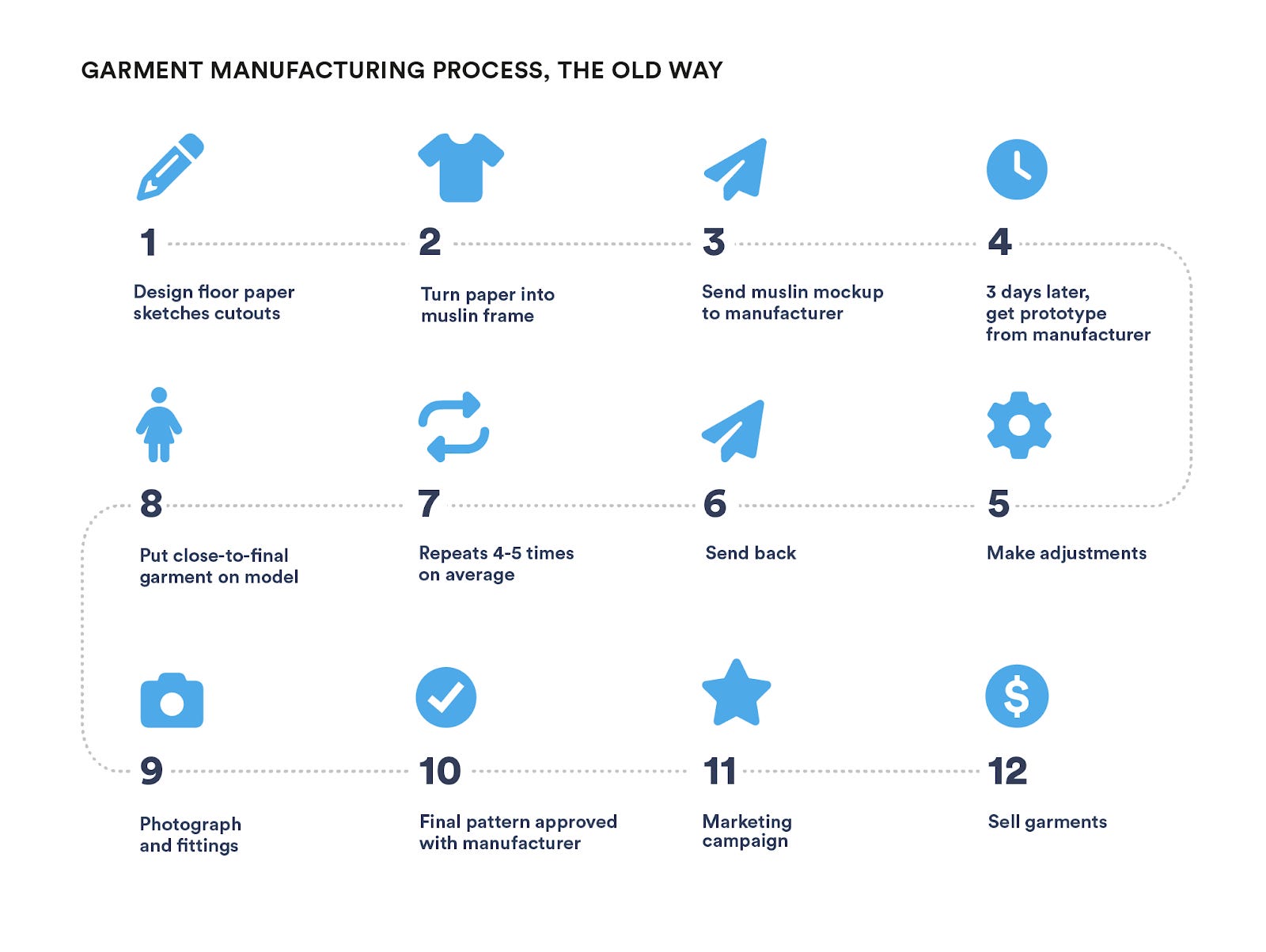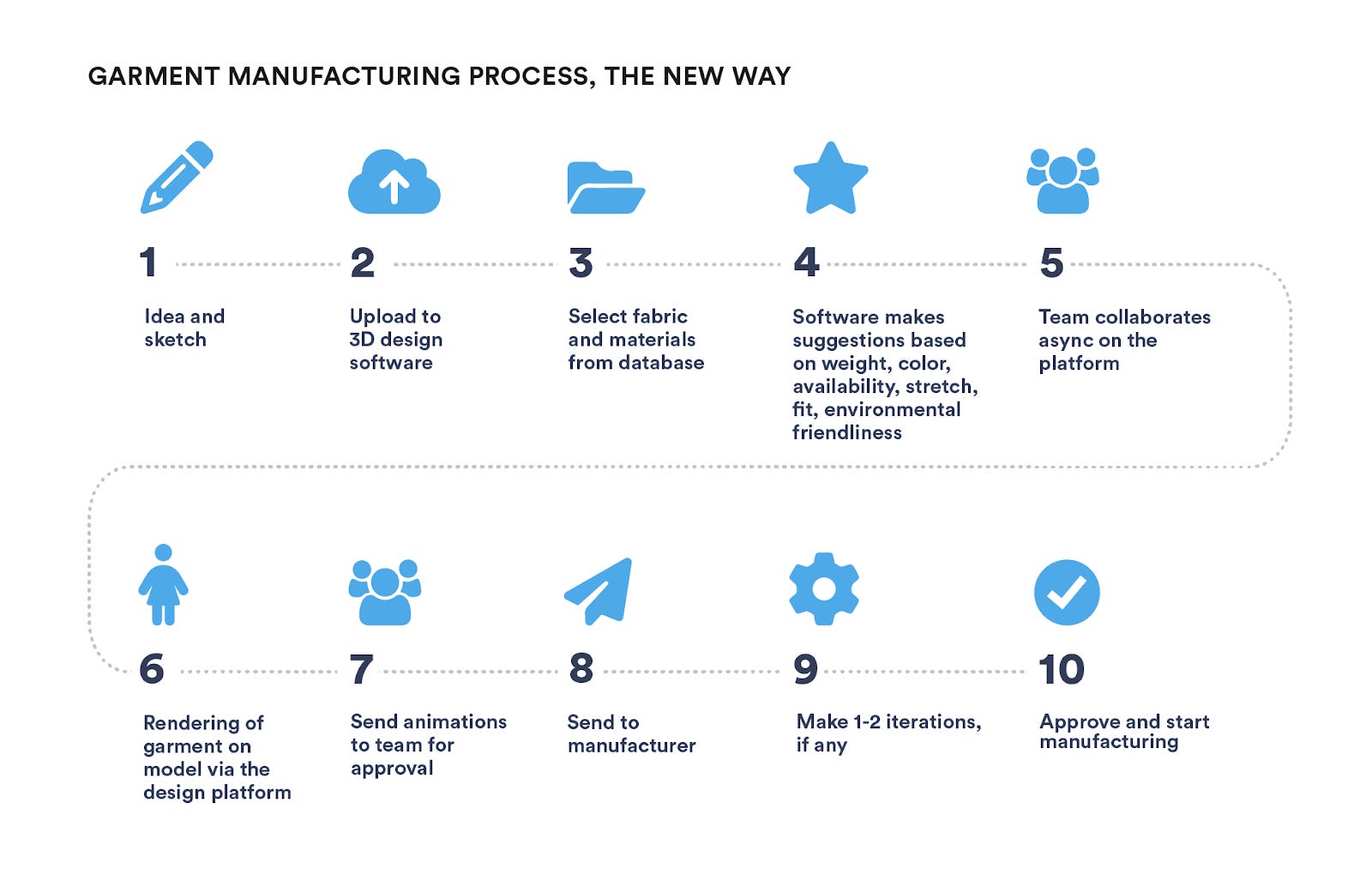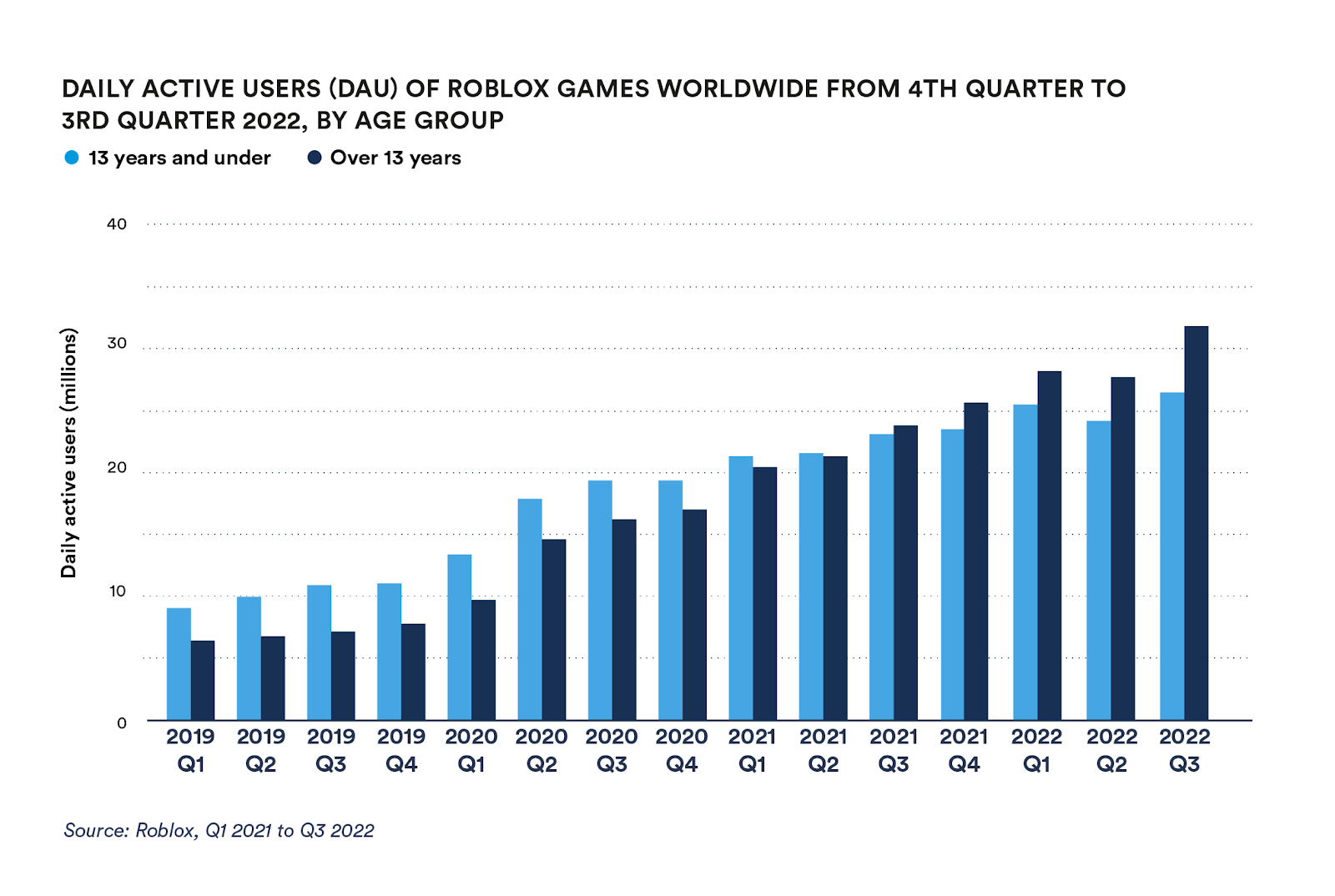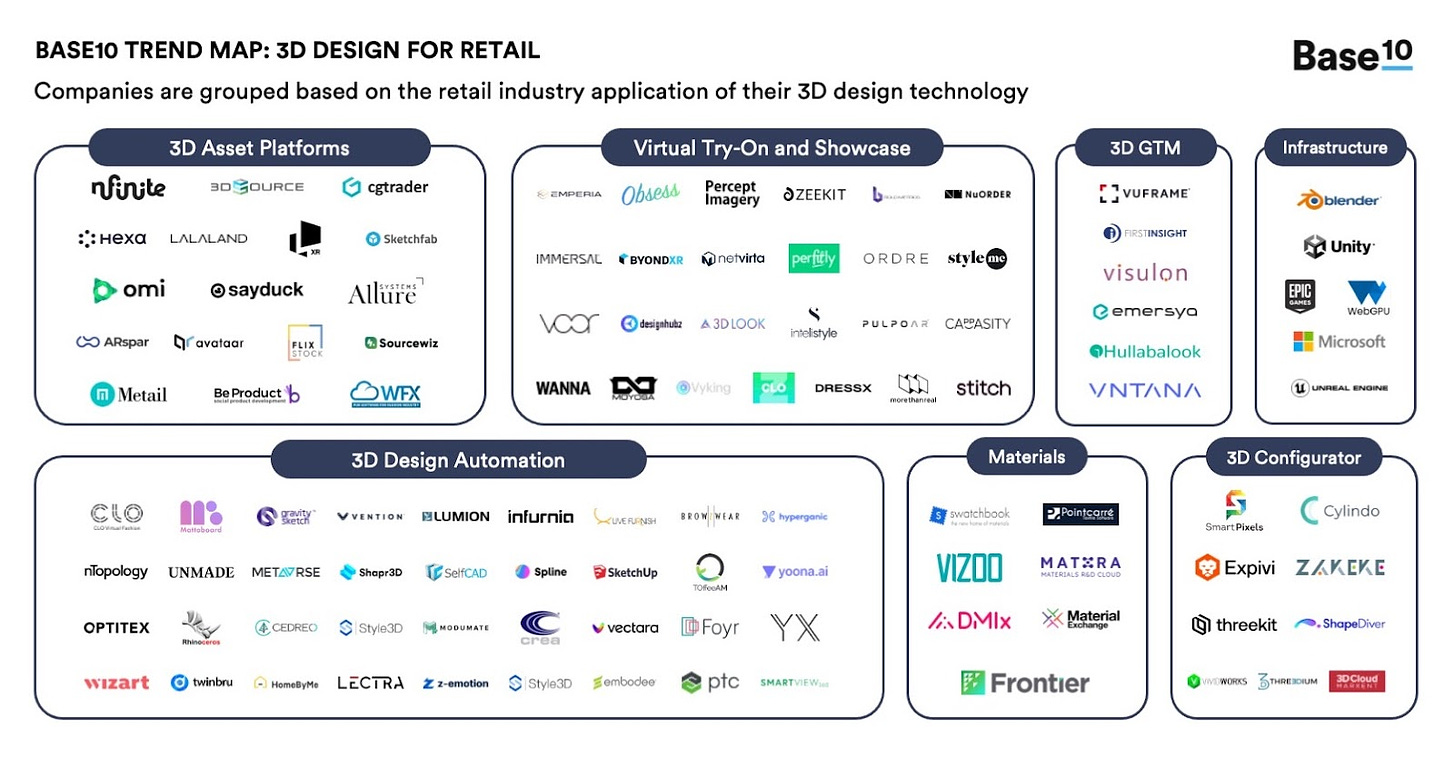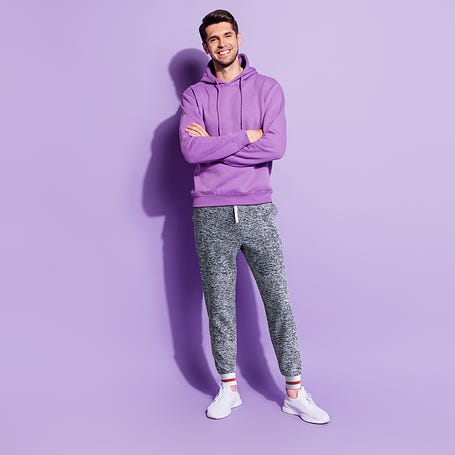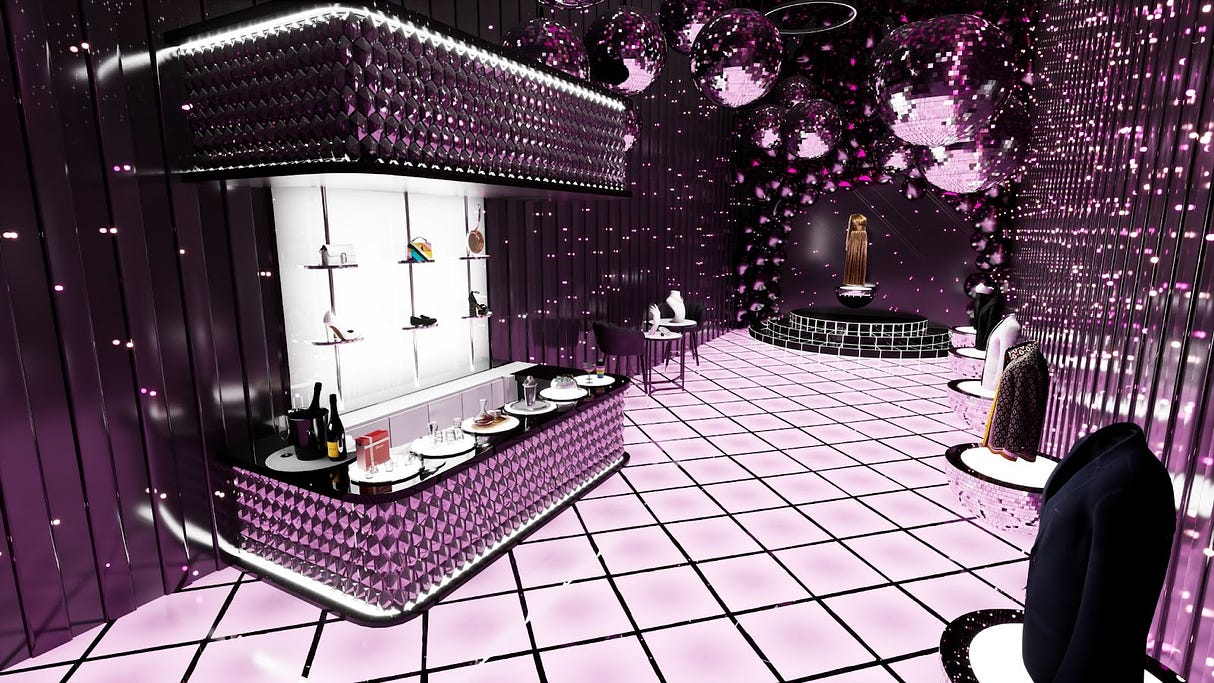Digital Meets Physical: How 3D is transforming the retail industry
Digital Meets Physical: How 3D is transforming the retail industry3D technology, which has been made widely accessible, affordable, and usable in recent years, is changing every part of retail—from ideation to design, experiencing, and selling.To read the full article and view the full universe of companies, visit the Base10 website. Clothing is one of the most ubiquitous and universal goods manufactured, purchased, sold, and disposed of in the world. From 10¢ thrift store t-shirts to designer ensembles worth thousands of dollars, clothing is both a commodity needed for survival as well as a status symbol and method of artistic expression. So, what does the typical experience look like for a 21st century clothing designer? Meet Jeremy, a designer at a multinational clothing conglomerate, assigned to one of the company’s dozen brands. Jeremy has been working in the industry for over a decade, and Jeremy’s first few years looked a lot like this: It can take several months to get from idea to final product with this process. And, with so many steps, complications are common. Jeremy flies in the rest of his team from satellite offices to the central brand office in New York to inspect the garment live and oversee the shoot—hopefully their flights are all on time. The model assigned to the shoot just spent a 20-hour day prior getting ready for New York Fashion Week—hopefully she doesn’t get sick the morning of the shoot. The photographer is coming into Manhattan from Brooklyn—hopefully their train doesn’t get delayed. And once the agency finally has the photos for the marketing campaign, hopefully the new line lands well with the market. Fortunately for Jeremy, times are a little bit different now, thanks to new 3D technology advancements emerging in the retail industry. Now, Jeremy’s process looks more like this: This process, enabled by hundreds of companies applying 3D technology to retail-specific use cases, can be done in 1-2 weeks. When Jeremy and his team are used to months-long processes, this tech is a game changer for the speed at which they can design, produce, and sell their products. The 3D-driven revolution is becoming a reality for segments across the entire retail industry, from clothing to furniture and everything in between. 3D is already enabling new optimizations and experiences we haven’t been able to see in 2D or in pen-and-paper before. Outside of retail, top companies are already spending big on 3D technology and have been growing as a result:
But the retail industry is where we’re seeing the most exciting advances and use cases for 3D design tech. The largest brands in the world are still investing millions in digitizing how they sell, even post-pandemic: Bloomingdales, which currently does over $2.8B in revenue annually, of which e-comm accounts for about $1B, used the Emperia platform to build a virtual showroom as part of their 150th anniversary celebration. Gen Z and Millennials are already accustomed to virtual buying via in-game purchasing, and are beginning to translate that behavior to their broader retail spending habits: Roblox has 60M+ DAUs, 4B+ hours spent per year in-game, bringing in ~$600M per quarter in in-game purchase revenues. Desktop and mobile GPUs are now capable of handling intensive 3D rendering and browsers now have well developed libraries like WebGL (and soon WebGPU) that make it far easier to develop and deploy 3D experiences to any device. The operating system for modern software (SaaS) isn’t Windows or macOS, but the browser. With browsers now well-positioned for 3D, we expect a rapid expansion in 3D enabled software and use cases. Because 3D technology is just getting to the point where reliable usage and easy access can fuel mass adoption, we are increasingly meeting founders that have noticed the trends above and are actively building tools and businesses to enable 3D creation, rendering/display, and sales across many retail verticals. We’ve bucketed the broad patterns of innovation we’re seeing into 7 segments:
Let’s take a look at some of the advantages brands and businesses are seeing from adopting 3D technology, and what companies are building a brighter future for folks like Jeremy and so many others in the broader retail industry. Advantage #1: Getting an environmental edge for a high-waste industryEnvironmental impact is becoming an ever more pressing issue for brands and consumers, and retailers are dedicating more resources to reducing their environmental impact. According to the Boston Consulting Group (BCG), retailers are accountable for 25% of all global carbon emissions, and the fashion industry, in particular, is responsible for more CO2 output than international flights and shipping combined, with 11.3 million tons of textiles thrown away each year. Fortunately, 3D design technology is making it easier to reduce both waste and emissions, and yet, a huge financial investment is still needed to achieve global carbon neutrality. 3D design tools like CLO and SmartPixels enable async 3D design of garments and thus reduce environmental waste generated from the manufacturing process itself. Packaging, physical transport, carbon emitted flying goods, and the sheer number of prototypes that go into making a final garment or item all contribute to the detrimental impact of fashion and retail as a whole. “Fashion industry greatly harms the environment through pollution, resource consumption, waste creation, and by producing up to 10% of the world's CO2 emissions,” said Julien Berta, co-founder and CEO of SmartPixels. “Virtual prototyping, as well as production on demand, are two solutions driving the change towards a more sustainable fashion lifecycle to meet consumer demands for more environmentally friendly clothing.” For designers like our friend Jeremy, not only are they reducing cycles and speeding up production as a whole, they can confidently make and market clothing that attracts a growing segment of consumers that are shunning traditional bulk clothing manufacturers for brands that can demonstrate that they, too, care about the planet. In other words, 3D design technology provides brands with an opportunity to demonstrate their commitment to a greener future. Data from Coresight has shown that CGI and 3D technology are up to 50% more carbon efficient than traditional photography. Advantage #2: Reducing time-to-market for an industry that needs to stay on top of trendsWith 3D tools in tow, product designers can now work directly with all members of their development process to take an idea from concept to sale without ever having to create a physical prototype. In an industry where time is of the essence to capture the often narrow windows of inflecting fashion trends, reducing time-to-market can be a significant advantage. Companies building in this space are reporting that their well-known fashion brand customers like Hugo Boss used to need 4 or more design cycles to get from initial design to physical production. Emerging 3D design technology allows brands to reduce these cycles, creating prototypes, picking fabrics, and viewing high quality renderings. Some brands even choose to upload these 3D renderings to their websites as product images, eliminating the need to produce physical items until orders start coming in. This functionality was especially important in 2020 and 2021 when supply chain issues from the COVID pandemic reduced reliability of material sourcing and shipping. Advantage #3: Augmenting checkout to increase cart conversionFor nearly all retailers that have an online sales presence, cart conversion is a well-known and well-lauded metric to measure shopper engagement and e-commerce site optimization. While cart conversion is nothing new in and of itself, 3D technology has enabled new product viewing and customization experiences for shoppers on these sites. Younger generations in particular are valuing the unique experiences that digital shopping can offer: over 80% say they research products online before purchasing in a store, so it’s critical that brands focus on making online representations of their real-life products as accurate and appealing as possible. In fact, brands that are bringing 3D technology to their sites are even seeing net new IP addresses, meaning that their revamped sites are attracting new eyeballs they wouldn’t have necessarily captured otherwise. Companies like Hexa 3D offer off-the-shelf technology that allows brands the ability to render 3D assets for their e-commerce stores from as little as one sample image to capture this aesthetic appeal with minimal lift. “3D and the digital world are more efficient ‘spaces’ to run and operate almost any business. Post-pandemic, businesses started to divert budgets from physical stores to strengthen their digital strategy,” said Yehiel Atias, co-founder and CEO of Hexa 3D. “In a matter of weeks, companies understood that despite the fact that the digital space represented only ~10%-20% of their revenue at the time, digital experiences are becoming a must-have, not a nice-to-have.” A recent report from Nfinite, which describes itself as a cloud-based virtual photography studio, showed that customers have increasing expectations around product visuals when shopping online. 88% of people say high-quality product imagery is important. But simple, quality product images have quickly become table stakes. In fact, 77% said product image capabilities actually increase their confidence in purchase decisions on websites they’ve never purchased from before. Advantage #4: It always pays to save moneyIt can cost the average clothing brand up to $3,000 per small garment to get a prototype made in Italy or similar, luxury source overseas. Brands will often go through 4 or 5 iterations of these prototypes before finalizing a piece. Using that math, a single luxury garment can cost $12-15k to produce, not including the cost associated with flying out team members to view the prototype in-person, nor does it include the opportunity cost of spending weeks waiting for prototypes, traveling, or creating marketing materials—the market rate for a garment shoot is $10k before even factoring in the cost of the model. When assets are created properly in 3D, it ultimately saves visualization costs and reduces the need for real-life photoshoots. Take for example, this rendering a clothing company did in Hexa 3D, in which the 3D pants were superimposed on top of a 2D model. The company was able to get far more product shots and outfit combinations without having to use the human model for every single iteration: Streamlining workflows and reducing costs is especially important for long-tail brands with limited capital and resources. Being able to create pieces virtually and then even sell them virtually through something like Emperia improves the cash flow position of these small businesses drastically as they no longer have to pre-manufacture, store, then sell items. Brands can now go from design to sale with no cost in between. Innovation will never go out of styleSince we’re just starting to scratch the surface of the potential 3D has for retail as a whole, the world is going to look very different for brands and manufacturers. With brands like IKEA leveraging 3D technology to render their entire catalogs without ever having to touch physical inventory, they can create essentially an infinite number of marketing and promotional images for their products. We discussed this phenomenon with Simon Kim, CEO of CLO, 3D design technology purpose-built for the fashion industry: “The “future” of retail is already here. Since companies like Ikea design in 3D, they don’t produce the physical furniture until the digital designs are finalized and approved, and those same designs are then utilized in every aspect of retail – from replacing e-commerce studio shots to AR/VR applications and customization,” said Simon. “The same can be said for fashion; many brands have already implemented or have started to implement a 3D design and development process, meaning that true-to-life digital assets are available to be used in e-commerce, advertising, customization, and AR/VR-powered services. Before, physical samples were the standard for decision-making and retail; now, physical products are merely a version of the 3D design asset.” CLO uses in-house algorithms around air generated drag, draping, and stretch, to render fabrics on different bodies and accurately portray them while moving, dancing, running, and more. CLO’s technology leads to faster go-to-market, no need to make physical samples, reduces waste, allows for 3D files to be shared and viewed in different platforms, and allows for async collaboration. Remember Jeremy? Customers like him can use CLO to actually create higher quality products out of this design process versus the old since designers can test the garment on different avatars virtually, without having to hire dozens of different models to represent a wide variety of body types. CLO can automatically analyze and then optimize the amount of fabric used in a garment without reducing quality and we are excited to see what other net new optimizations CLO is able to produce. Nfinite, which we mentioned earlier, also uses 3D and CGI technology to help home and living, home improvement and CPG retailers with visual merchandising and virtual photography. Alexandre de Vigan, founder and CEO of Nfinite, told us: "Leveraging 3D technology should be an easy ROI equation for brands and retailers. Customers we work with see cost savings of 30% in the first year compared to traditional photography, while also seeing improvement across other critical business metrics such as time to market, shopper engagement and most importantly, conversion rates." Producing the 3D visualizations of the products is, of course, only part of the go-to-market motion for brands—you have to have somewhere to also show off the products. Increasingly, we’re seeing retailers pursue new avenues for making their products and digital storefronts stand out in the e-comm landscape. Emperia is becoming a popular choice for some of the world’s biggest brands that want to expand into virtual retail. Emperia is a plug-and-play virtual e-commerce platform that allows brands to generate and maintain 3D showrooms with shoppable products. Solutions like Emperia are compelling to brands because they don’t require a ton of upfront investment (of both time and capital) and quickly allow big retailers to create rooms of their desire and show and sell their products. Bloomingdale’s launched its virtual store via Emperia for their 150th anniversary celebration in late 2022, as did Lacoste, using Emperia to incorporate an exclusive room gated with loyalty tokens. Emperia’s no-code interface and pre-rendering algorithms allow for quick spin up, live sync with inventories, and no lag in rendering. The technology preloads the virtual stores so there isn’t a 10 minute render time, which is more typical of 3D environments and what many consumers are used to seeing from experiencing 3D through gaming experiences. Millions in sales have already happened through Emperia and users spend 14 minutes on Emperia per session on average. Big retailers are taking notice, and small stores are dropping their physical spaces and running their whole store through Emperia (Disclosure: Base10 is an investor in Emperia). Olga Dogadkina, co-founder & CEO, Emperia, told us: “Virtual stores are the future of e-commerce. The ability to present 3D products in an enhanced, online environment, goes beyond the aesthetics; it adds a layer of customer service and user experience that 2D e-commerce websites simply could not provide. Virtual worlds can be personalized, leveraging user data, contributing to an intimate brand experience, increasing brand loyalty and ultimately increasing conversions.” What’s next?3D tech, made widely accessible and usable, is changing retail from design to selling. 3D design tech optimized for the retail industry offers environmental and sales advantages: reducing environmental waste, carbon emissions, total cost of e-commerce content production, and time-to-market. If you’re building retail-focused solutions with 3D technology, or 3D design technology more broadly, we’d love to meet you! Base10: Automation for the Real Economy is free today. But if you enjoyed this post, you can tell Base10: Automation for the Real Economy that their writing is valuable by pledging a future subscription. You won't be charged unless they enable payments. |
Older messages
If You’re Not First, You’re Last: How AI Becomes Mission Critical
Thursday, November 17, 2022
The AI platform shift, led by generative AI, will create as much value as the cloud platform shift, completely changing the broader knowledge economy.
The Rise of New Software Ecosystems
Tuesday, June 28, 2022
SaaS companies are leveraging ecosystems to extend their platforms' value—and entrepreneurs are racing to build businesses and capture a segment of the value these ecosystems are creating.
Accessible, Affordable, Acceptable: How COVID-19 Has Shaped Mental Health Care
Monday, April 26, 2021
COVID-19 has opened up untapped care channels for a variety of Americans seeking mental health treatment.
This Time Is Different: How Automation Can Win the Fight Against Climate Change
Monday, April 26, 2021
Entrepreneurs and investors who are actively building tools to help companies better manage ESG programs will drive enduring, climate positive change.
Giving everyone a voice: How technology is helping stakeholders better manage social and governance issues
Monday, April 26, 2021
Effectively managing social and governance-related initiatives is both increasingly complicated and critical, and companies are relying on a landscape of platforms to communicate truth and transparency
You Might Also Like
🔮 $320B investments by Meta, Amazon, & Google!
Friday, February 14, 2025
🧠 AI is exploding already!
✍🏼 Why founders are using Playbookz
Friday, February 14, 2025
Busy founders are using Playbookz build ultra profitable personal brands
Is AI going to help or hurt your SEO?
Friday, February 14, 2025
Everyone is talking about how AI is changing SEO, but what you should be asking is how you can change your SEO game with AI. Join me and my team on Tuesday, February 18, for a live webinar where we
Our marketing playbook revealed
Friday, February 14, 2025
Today's Guide to the Marketing Jungle from Social Media Examiner... Presented by social-media-marketing-world-logo It's National Cribbage Day, Reader... Don't get skunked! In today's
Connect one-on-one with programmatic marketing leaders
Friday, February 14, 2025
Enhanced networking at Digiday events
Outsmart Your SaaS Competitors with These SEO Strategies 🚀
Friday, February 14, 2025
SEO Tip #76
Temu and Shein's Dominance Is Over [Roundup]
Friday, February 14, 2025
Hey Reader, Is the removal of the de minimis threshold a win for e-commerce sellers? With Chinese marketplaces like Shein and Temu taking advantage of this threshold, does the removal mean consumers
"Agencies are dying."
Friday, February 14, 2025
What this means for your agency and how to navigate the shift ͏ ͏ ͏ ͏ ͏ ͏ ͏ ͏ ͏ ͏ ͏ ͏ ͏ ͏ ͏ ͏ ͏ ͏ ͏ ͏ ͏ ͏ ͏ ͏ ͏ ͏ ͏ ͏ ͏ ͏ ͏ ͏ ͏ ͏ ͏ ͏ ͏ ͏ ͏ ͏ ͏ ͏ ͏ ͏ ͏ ͏
Is GEO replacing SEO?
Friday, February 14, 2025
Generative Engine Optimization (GEO) is here, and Search Engine Optimization (SEO) is under threat. But what is GEO? What does it involve? And what is in store for businesses that rely on SEO to drive
🌁#87: Why DeepResearch Should Be Your New Hire
Friday, February 14, 2025
– this new agent from OpenAI is mind blowing and – I can't believe I say that – worth $200/month

